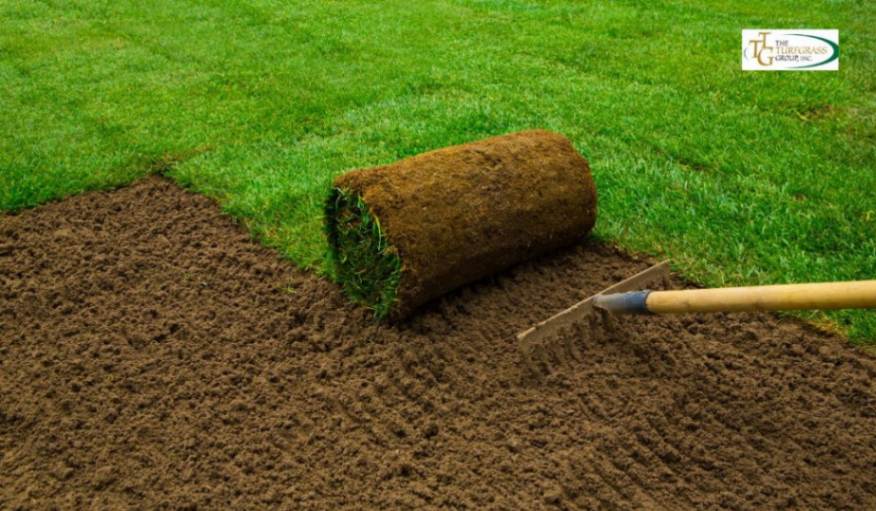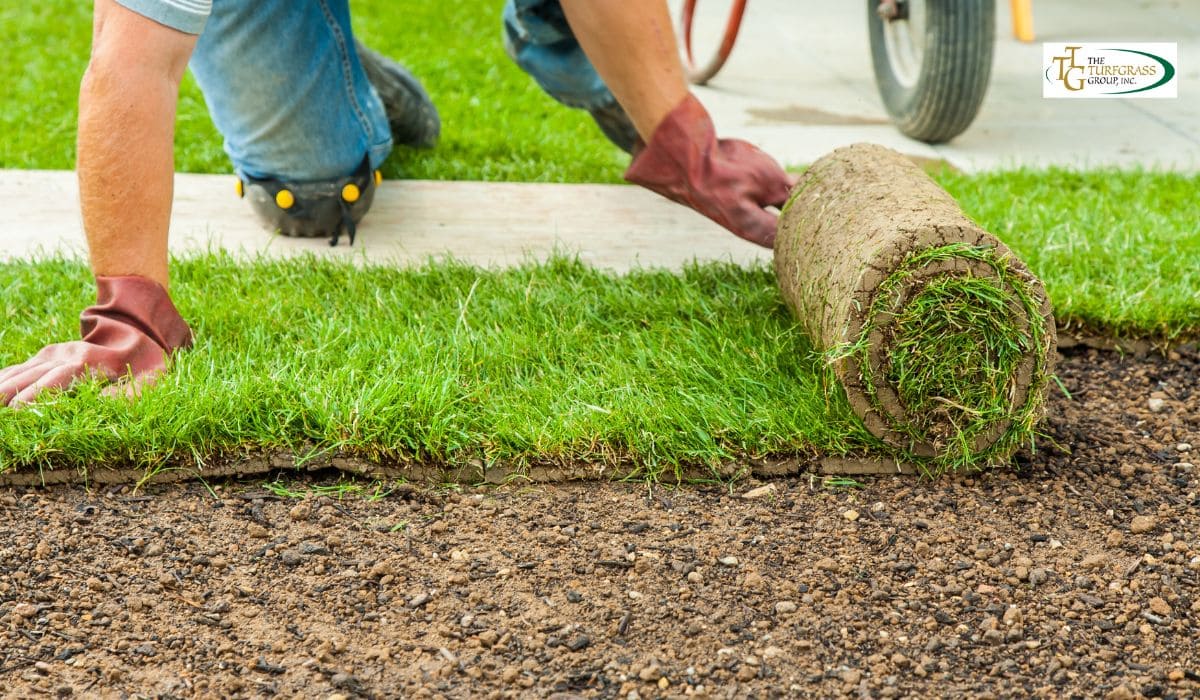
When considering the best time to plant Bermuda sod, timing is crucial to ensure your lawn establishes itself successfully.
Bermuda grass is known for its resilience and ability to thrive in warm climates, making it a popular choice for lawns in many regions.
Whether you’re establishing a new lawn or renovating an existing one, understanding the optimal planting time can significantly impact the health and growth of your Bermuda sod.
Before diving into the specifics of when to plant Bermuda sod, it’s essential to understand the characteristics of Bermuda grass itself.
Bermuda grass (Cynodon dactylon) is a warm-season grass that flourishes in hot temperatures and full sun.
It is highly tolerant of heat, drought, and foot traffic, making it ideal for lawns, sports fields, and parks in warm climates.
Bermuda grass spreads rapidly through both above-ground runners, called stolons, and below-ground rhizomes, forming a dense and resilient turf.
Characteristics of Bermuda Grass
Resilience and Adaptability:
Bermuda grass (Cynodon dactylon) is renowned for its resilience and ability to thrive in a variety of conditions.
It’s particularly well-suited to warm climates and can withstand both drought and heavy foot traffic.
This makes it a popular choice for lawns, golf courses, sports fields, and other high-traffic areas.
Growth Habits:
Bermuda grass spreads through both above-ground runners, known as stolons, and below-ground stems called rhizomes.
These growth habits allow Bermuda grass to quickly fill in bare patches and recover from damage.
Its aggressive growth can sometimes make it invasive in gardens or flower beds if not properly contained.
Leaf Texture and Color:
The leaves of Bermuda grass are fine-textured and can range in color from light green to dark green, depending on the variety and growing conditions.
Some cultivars may exhibit a slightly blue-green hue, enhancing their aesthetic appeal in landscapes.
Warm-Season Grass:
As a warm-season grass, Bermuda grass thrives in temperatures between 75°F and 90°F (24°C to 32°C).
It enters dormancy and turns brown when temperatures drop below 50°F (10°C), a natural survival mechanism that allows it to conserve energy during colder months.
Sunlight Requirements:
Bermuda grass requires full sun to thrive.
It prefers at least 6 to 8 hours of direct sunlight daily, making it less suitable for shaded areas where it may thin out or become susceptible to disease.
Maintenance Needs:
Maintaining Bermuda grass involves regular mowing, watering, and fertilization to keep it healthy and vigorous.
Proper lawn care practices, such as mowing at the correct height and providing adequate nutrients, contribute to its overall resilience and appearance.
Cultivars of Bermuda Grass
There are several cultivars of Bermuda grass, each with its own characteristics and adaptations:
Common Bermuda Grass (Cynodon dactylon): This is the most widely planted variety due to its affordability and ability to tolerate diverse conditions.
It’s commonly used in lawns, parks, and utility areas.
Hybrid Bermuda Grasses: These include popular cultivars like Tifway 419, TifSport, and Celebration.
They are known for their finer texture, improved drought tolerance, and better resistance to diseases compared to common Bermuda grass.
Improved Varieties: Breeders have developed improved Bermuda grass varieties that offer enhanced characteristics such as faster establishment, denser turf, and improved pest resistance.
These varieties are often chosen for their specific performance attributes in different climates and uses.
Uses of Bermuda Grass
Bermuda grass serves various practical and aesthetic purposes in landscaping and beyond:
Lawns: Its ability to withstand wear and tear makes Bermuda grass ideal for residential and commercial lawns where durability is essential.
Sports Fields: Bermuda grass is commonly used on sports fields and golf courses due to its ability to recover quickly from damage caused by athletic activities and foot traffic.
Erosion Control: The dense root system of Bermuda grass helps prevent soil erosion on slopes and embankments, making it a valuable landscaping tool in erosion-prone areas.
Aesthetics: Its lush green appearance and fine texture contribute to its popularity in landscaping, where it provides a vibrant and well-manicured look to outdoor spaces.
Factors Influencing Planting Time
Several factors influence the best time to plant Bermuda sod:
Climate and Temperature: Bermuda grass thrives in warm temperatures between 75°F and 90°F (24°C to 32°C).
Planting during periods of moderate temperatures ensures that the grass can establish roots without being stressed by extreme heat or cold.
Soil Temperature and Moisture
Soil Temperature: Bermuda grass establishes best when soil temperatures are consistently above 60°F (15°C).
Warmer soil temperatures promote quicker root growth and establishment.
Testing soil temperature with a thermometer can help determine if conditions are suitable for planting.
Soil Moisture: It’s essential to ensure the soil is adequately moist but not waterlogged when planting Bermuda sod.
Planting during periods of moderate rainfall or when irrigation can be easily controlled helps provide the necessary moisture for initial root development.
Growing Season and Daylight
Growing Season: Bermuda grass is a warm-season grass that experiences its peak growth during late spring and summer when temperatures are consistently warm.
Planting during this active growth period allows the sod to establish quickly before potential winter dormancy.
Daylight Hours: Longer daylight hours in late spring and early summer provide Bermuda grass with ample sunlight for photosynthesis and growth.
This contributes to faster root establishment and overall turf vigor.
Seasonal Considerations
Spring Planting: Planting Bermuda sod in late spring allows it to take advantage of warming temperatures and increasing daylight hours.
This timing supports rapid root establishment and vigorous turf growth.
Fall Planting: Early fall planting can also be effective as temperatures begin to cool slightly from summer highs.
Cooler weather reduces stress on newly installed sod while still providing adequate warmth for root development before winter dormancy.
Rainfall and Irrigation Patterns
Rainfall: Timing sod installation just before a period of regular rainfall can reduce the need for manual irrigation and help newly laid sod establish quickly.
However, excessive rainfall can lead to waterlogging, so balance is key.
Irrigation: If rainfall is insufficient, ensure you have a reliable irrigation system in place to keep the sod consistently moist during the critical establishment period.
Water deeply and infrequently to encourage deep root growth.
Best Times to Plant Bermuda Sod
Based on the factors mentioned above, the best time to plant Bermuda sod is typically during late spring to early summer or early fall.
Here’s why these times are optimal:
Late Spring to Early Summer: This period provides warm temperatures that promote rapid growth and establishment of Bermuda sod.
As temperatures rise and daylight increases, the grass can quickly develop a strong root system and spread to fill in the lawn.
Early Fall: Planting Bermuda sod in early fall takes advantage of warm soil temperatures while avoiding the intense heat of summer.
The cooler temperatures and occasional rainfall in early fall create ideal conditions for root establishment without the stress of summer heatwaves.
Step-by-Step Guide to Planting Bermuda Sod
To ensure the successful establishment of Bermuda sod, follow these steps:
Prepare the Soil: Begin by clearing the area of existing vegetation and debris.
Till the soil to a depth of 4-6 inches to loosen compacted soil and improve drainage.
Level the Surface: Rake the soil to create a smooth and level surface.
Proper grading ensures uniform sod installation and prevents water pooling.
Install the Sod: Lay the Bermuda sod rolls tightly together in a staggered pattern, similar to brickwork.
Press the edges together to eliminate gaps where weeds could grow.
Water Thoroughly: Immediately after installation, water the sod deeply to ensure the soil beneath is moistened.
Continue to water daily for the first two weeks, gradually reducing frequency as the sod establishes.
Monitor Growth: Keep an eye on the sod as it establishes.
Avoid heavy foot traffic or mowing until the roots have firmly anchored into the soil.
Fertilize Regularly: Once the Bermuda sod has rooted and established new growth, follow a fertilization schedule to maintain its health and vigor.
Conclusion
Choosing the best time to plant Bermuda sod is crucial for ensuring a lush and healthy lawn.
By understanding the growth patterns and environmental needs of Bermuda grass, you can optimize the timing of sod installation for successful establishment and long-term vitality. Whether you opt for late spring, early summer, or early fall planting, providing adequate water, sunlight, and care will help your Bermuda sod thrive and create a vibrant green lawn for years to come.
FAQs
What is the best time to plant Bermuda sod?
The optimal times to plant Bermuda sod are late spring to early summer or early fall. These periods provide warm soil temperatures and sufficient daylight for rapid root establishment.
Can Bermuda sod be planted in winter?
It’s generally not recommended to plant Bermuda sod in winter. Bermuda grass enters dormancy in colder temperatures and may struggle to establish roots during this period.
How should I prepare the soil before planting Bermuda sod?
Prepare the soil by removing existing vegetation and debris. Till the soil to a depth of 4-6 inches to loosen compacted soil and improve drainage. Level the surface to ensure even sod installation.
How often should I water newly planted Bermuda sod?
Water newly planted Bermuda sod deeply immediately after installation to ensure the soil beneath is moistened. Water daily for the first two weeks, gradually reducing frequency as the sod establishes.
When can I mow newly planted Bermuda sod?
Avoid mowing newly planted Bermuda sod until the roots have firmly anchored into the soil, typically after 2-3 weeks of growth. Set your mower blade to a high setting initially to avoid stressing the young turf.
How long does it take for Bermuda sod to establish?
Bermuda sod typically establishes roots within 2-4 weeks under optimal conditions. However, full establishment and maturity can take several months, depending on factors like weather and maintenance.
What fertilizer should I use for Bermuda sod?
Choose a fertilizer specifically formulated for Bermuda grass, such as one with a balanced ratio of nitrogen, phosphorus, and potassium (N-P-K). Follow application instructions based on soil test results and local recommendations.
How can I prevent weeds in my Bermuda sod lawn?
Apply a pre-emergent herbicide before planting Bermuda sod to prevent weed seeds from germinating. Regular mowing, proper irrigation, and maintaining a healthy turf density also help suppress weed growth.
Can Bermuda sod be installed over existing grass?
While it’s possible to install Bermuda sod over existing grass, it’s generally not recommended. Proper soil preparation and removal of existing vegetation ensure better root contact with the soil and improve sod establishment.
How do I maintain a healthy Bermuda sod lawn?
Maintain a healthy Bermuda sod lawn by mowing at the recommended height (about 1-2 inches for most varieties), watering deeply and infrequently to encourage deep root growth, fertilizing according to soil test results, and aerating periodically to reduce soil compaction.
